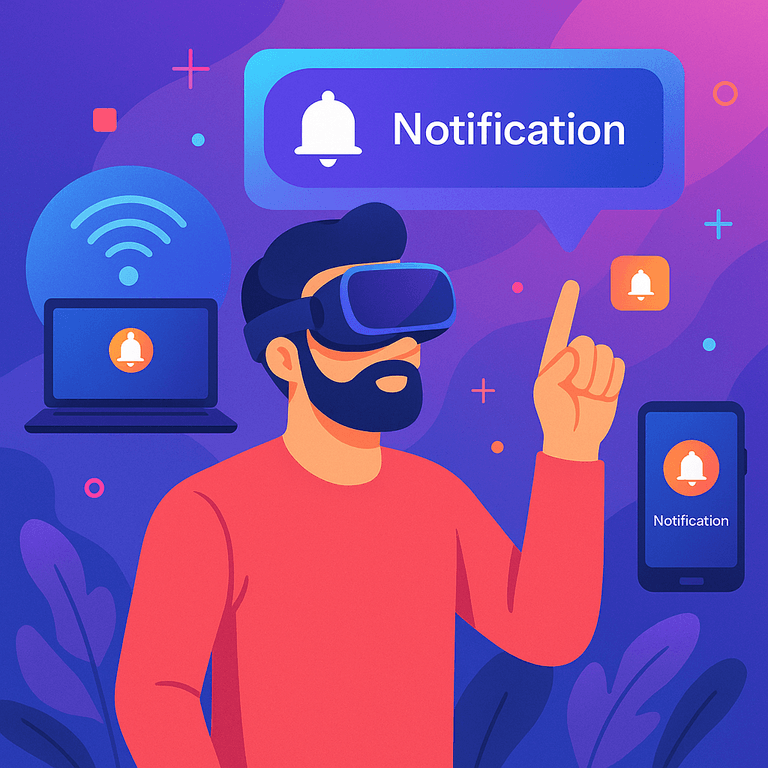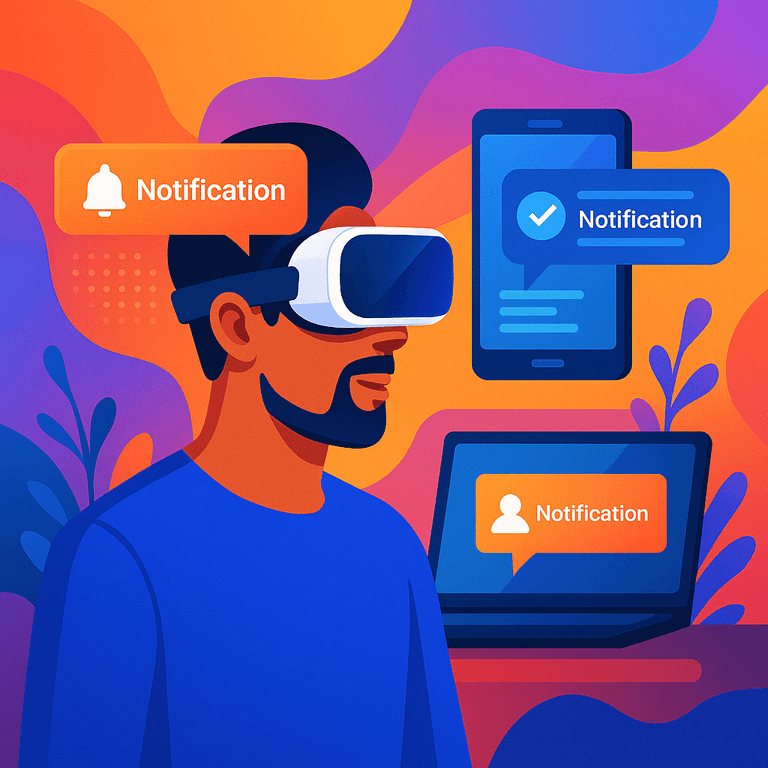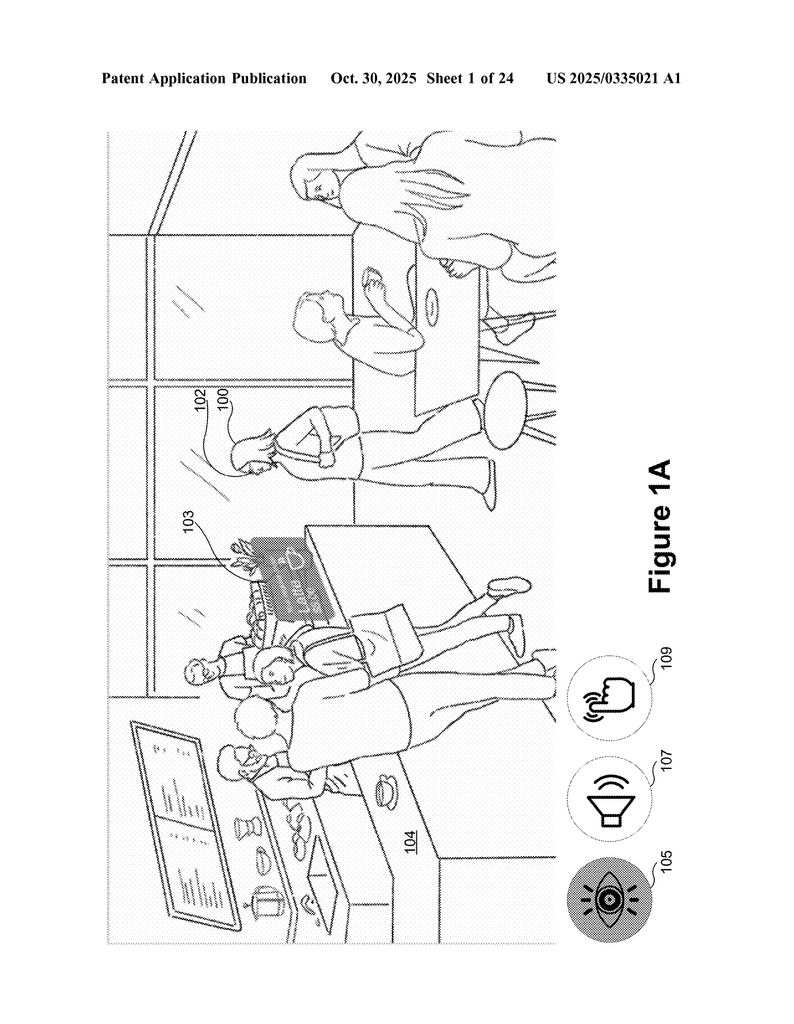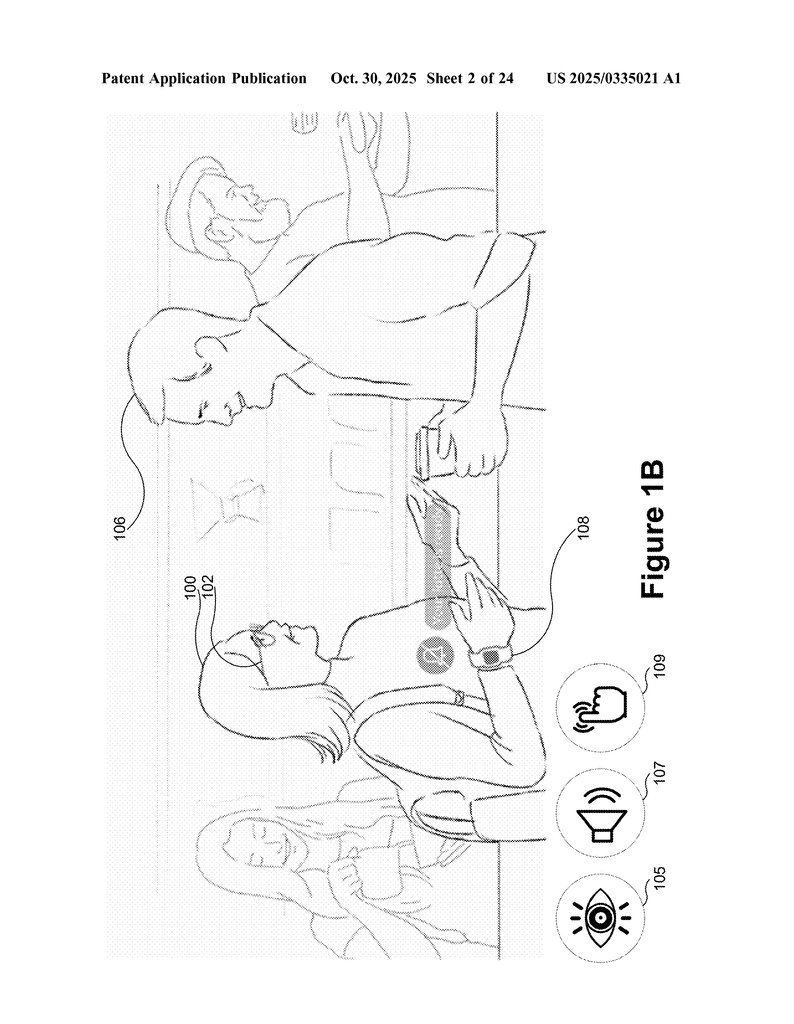Invented by Parent; Mark, Lafreniere; Benjamin, Jonker; Tanya Renee, Smith; Martha Irene, Fu; Wangxing, Braun; Jared, Li; Michelle, Wallace; Dylan, Simpson; Brian, Croswell; Michael, Gong; Weilun, Sewell; Monica, Kozhokar; Denis
The way we get notifications on our devices is changing fast. With smart glasses, watches, and even smart clothing, users now live in a world with many devices all talking to each other. A new patent application describes a system that helps these devices work together to send notifications at the best time and in the best way. Let’s explore what’s behind this idea, how it stands out, and why it matters.
Background and Market Context
People today own more than just a phone. We have smartwatches, glasses that can show information, and even clothing with special sensors. Each device can buzz, beep, or display messages. But sometimes, all these alerts can get overwhelming or distracting. Imagine being in a meeting and your phone, watch, and glasses all buzz at once. Or, think about being on a busy street and missing an important alert because your device only vibrated and you didn’t feel it.
The rise of wearable tech is changing how we interact with the world. Smartwatches keep track of our health and notify us about calls or texts. Smart glasses can show us navigation directions or reminders right in front of our eyes. Newer smart textiles can even give us a gentle nudge or vibration. With so many ways to get our attention, the challenge is how to make sure we notice the right message at the right time, without being annoyed or missing something important.
Right now, most devices handle notifications on their own. A phone might ring or vibrate, a watch might buzz, and glasses might show a visual alert. But these systems don’t talk to each other about what’s happening around us or what we’re doing. Sometimes, they all alert us at once. Other times, we might miss a message because the device tried to be polite and stayed silent when it should have spoken up.
People want technology to fit into their lives, not interrupt them. The market is moving toward smarter, more helpful devices. For wearable makers, the goal is to keep users happy, safe, and engaged, while reducing annoyance. That’s where this new invention comes in—it aims to change how notifications are handled, so users get the right message in the right way, depending on what’s going on around them.
Scientific Rationale and Prior Art
Sending notifications is not new. Phones have used ringtones, vibrations, and pop-up messages for years. Some modern devices let users pick “Do Not Disturb” modes or mute notifications if they’re busy or in a certain place. For example, your watch might know you’re exercising and hold off on less important messages. Some systems use simple rules, like muting all alerts at night or when a calendar says you’re in a meeting.
There are also basic ways for devices to use sensors. Phones might silence themselves if they detect you’re driving. Watches might use motion sensors to guess if you’re sleeping. Some smart speakers can tell if you’re talking and wait before giving you an alert. But usually, these are single-device solutions. They don’t work well when you’re using several devices together.
Some smart home systems allow a bit more, sending alerts to the right speaker or screen based on where you are in your house. But these systems still mostly rely on fixed rules or user settings. They don’t pay close attention to details like noise level, whether you’re in a conversation, or what device you’re looking at right now.
The main problems with current systems are:
1. They often act alone and don’t work in harmony with other devices.
2. They use simple rules, not real “awareness” of the situation.
3. They can’t easily tell if you’re busy, distracted, or in a place where one type of alert is better than another.
4. They can send too many or too few alerts, making people either annoyed or unaware.
This is where the new patent application stands out. It uses data from many sensors on different devices—like microphones, cameras, GPS, and movement sensors—to figure out what’s going on around you. Then, it decides not just if you should get an alert, but how you should get it: sound, vibration, display, or a mix. It can even delay messages until you’re ready, or send urgent ones right away, no matter what else is happening.
So, while prior art has focused on basic settings or rules, this new system uses real-time information from many sources to make smarter choices. It tries to solve the problem of information overload, missed messages, and user frustration, all at once.
Invention Description and Key Innovations
The patent application describes a system where a head-wearable device (like smart glasses or a headset) talks to other devices—maybe a smartwatch, phone, or even smart clothing. These devices all have sensors. For example, the glasses might have a camera and microphone, the watch might have a movement sensor, and your phone might have GPS. The system collects data from all these sensors to figure out your environment and what you’re doing.
Here’s how it works in simple steps:
When a notification needs to be sent—like a reminder, a message, or an alarm—the system first checks sensor data. It might listen to the microphone to see if you’re talking with someone. It might look at the camera to see if you’re busy or moving. It might use GPS to know if you’re at home, work, or outside. It can even check if the area is noisy.
After collecting this data, the system decides the best way to get your attention. If you’re in a quiet place, it might use a soft sound. If you’re talking to someone, it might wait until you’re done or just give you a gentle tap on your wrist. If it’s too bright outside, it might use sound instead of showing something on your glasses. If the environment is loud, it might use vibration or a visual alert instead of sound.
The system can handle more than one notification at a time. For example, if you get a low-priority reminder while you’re in a meeting, it can wait until you’re free. But if something urgent happens—like a safety alert—it can break through and notify you right away, even if you’re busy. The system can also pick which device is best to send the alert. If you’re looking at your phone, the phone can show the message. If your hands are busy, maybe the watch vibrates instead.
Some clever features include:
– The ability to combine alerts: for urgent messages, you might get both a sound in your headset and a vibration on your wrist.
– Deciding what kind of information to show: your watch might just say “New message,” while your glasses can show the whole message if it’s safe to do so.
– Adjusting in real time: if you move from a noisy street into a quiet room, the system can change how it sends alerts.
– Using different data: for example, camera data to see if you’re holding something hot, so it waits before distracting you.
– Being able to delay unimportant notifications until you’re less busy, but always sending high-priority ones.
The system is built to be automatic. You don’t have to dive into menus and set things up for every situation. It learns from your activity and environment. Over time, it can even adjust based on your habits—if you always ignore alerts when you’re reading, it can learn to wait until you’re done.
From a technical point of view, this invention is about making wearables smarter and more helpful. It’s not just about sending a beep or a buzz. It’s about understanding your world and picking the right time and way to get your attention. This means fewer missed alerts, less annoyance, and a better experience using multiple devices.
For companies making wearables, this can set their products apart. Users will feel that their devices are more thoughtful and less disruptive. For developers, it means they can build apps that let the system handle notifications in a smart way, without having to write lots of special rules.
Conclusion
This new approach to handling notifications is a big step forward for wearable technology. Instead of blasting users with alerts or leaving them in the dark, the system uses real-world data from many devices to make smart, kind choices. It knows when to speak up, when to wait, and how to get your attention in the best way. As wearables become a bigger part of our lives, inventions like this will help them fit in smoothly, keeping us informed without getting in the way. For anyone building, selling, or using wearable devices, this is an exciting development that points to a future where technology works with us, not against us.
Click here https://ppubs.uspto.gov/pubwebapp/ and search 20250335021.




